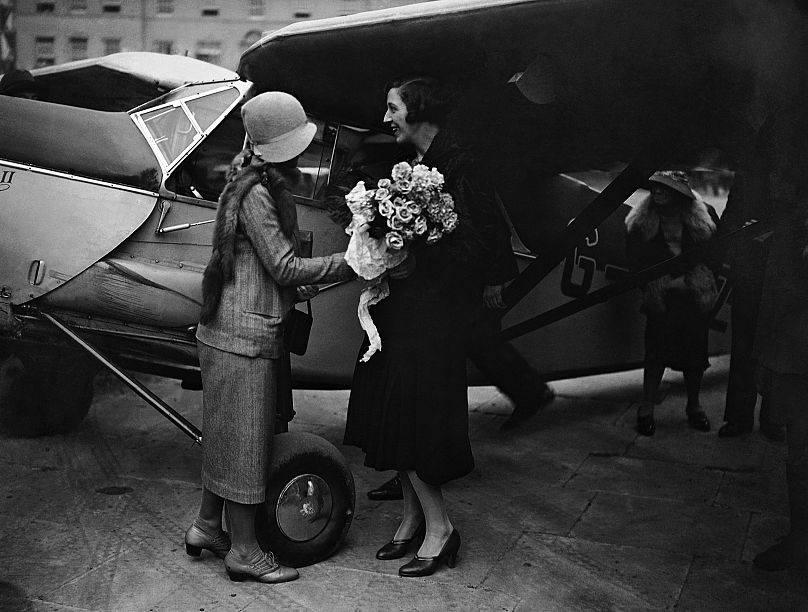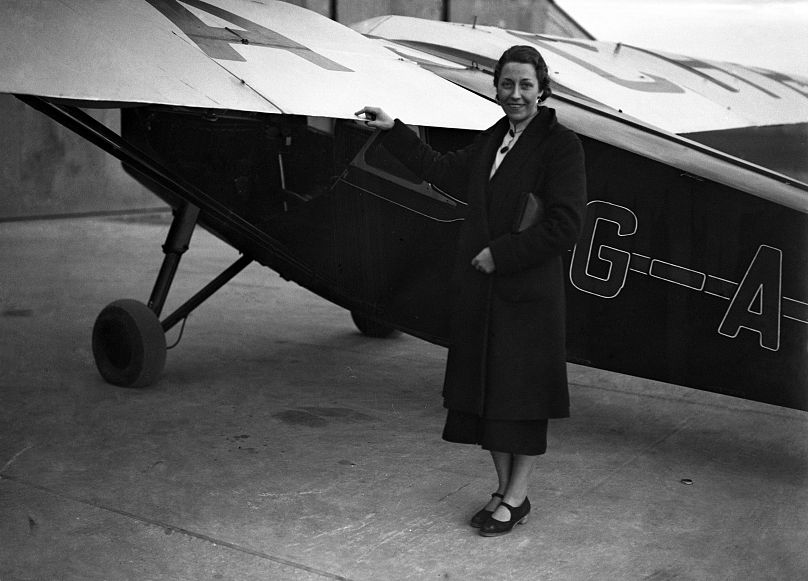24 May 1930: Amy Johnson completes her record-breaking flight
When you think of intrepid female aviators who dared to cross distances solo in the 30s and disappeared mysteriously during a flight, you’ll probably name Amelia Earhart. There’s a good reason for it. The American pilot and writer became an international star when, in 1932, she made a nonstop solo-flight across the Atlantic Ocean.
Earhart captured the attention of budding pilots and became a female icon for her brave flying missions before disappearing in 1937 alongside navigator Fred Noonan during an attempt to fully circumnavigate the globe. But this article isn’t about Earhart.
Instead, it’s about another pioneering pilot. English pilot Amy Johnson was born in Hull just six years after Earhart in 1903. Although her great-grandfather had been a Mayor of Hull, she grew up in a working class family of fish merchants, before going on to study economics at the University of Sheffield.
After a few underwhelming jobs in the north, she moved to London with bright hopes. The 5’ 4’’ Johnson had always preferred boys games and in 1928 realised she could take up her desired hobby – flying – at an affordable rate by joining the Stag Lane Aerodrome flying club.
From there on, her life’s interest was sealed. Her first flight in September 1928 was hardly smooth though as she handled the controls awkwardly and couldn’t hear her instructor’s guidance. “When I was up in the air I could only hear a confused sound in my neck instead of what should have been lucid instructions . . . I was scared stiff of my instructor who never seemed to lose his first idea that I was a born idiot,” she recalled.
Nevertheless, she committed to flying and by June 1929, she made her first solo flight, earning her an A pilot’s licence. She then became the first woman in Britain to earn a ground engineer’s licence, distinguishing her from the upper class female pilots of the era.
Facing an ultimatum from her day-job boss asking her to quit flying, she instead committed to a new goal – breaking the world record for the fastest flight from England to Australia. At the time, the record was held by Bert Hinkler 15 and a half day flight in 1928.
Securing sponsorship and with some help from her father, Johnson bought a Gipsy Moth plane and named it “Jason” in honour of her family’s fish business. With much of the press marvelling at her gender, on 5 May 1930, Johnson set out on her solo-mission to Australia from Croydon Airport.
Although the Daily Mail’s headline reported that Johnson had set out with a “Cupboard Full of Frocks”, Johnson in fact had minimal provisions. No radio, basic maps, and a revolver for protection, Johnson set out on a straight line course across large swathes of uncharted territory.
She crossed Europe, stopping in Austria, before continuing to Turkey. Then she flew to Syria after a sandstorm diverted her from her planned stop in Baghdad. After Baghdad, Johnson took aim for Karachi in modern-day Pakistan. Monsoons nearly stopped her on the way to Myanmar, where she mistook a playing field for a runway and damaged her propeller.
The repairs delayed her two day lead over Hinkler’s record before Johnson set out for Thailand, followed by Singapore. Her final legs across modern-day Indonesia saw Johnson complete the journey landing in Darwin, Australia on this day in 1930.
Johnson was met in Australia by baying fans, including King George V, who later awarded her CBE. Johnson hadn’t beaten Hinkler’s record, but she had still become the first woman to solo-navigate a plane from England to Australia.
For the next decade, Johnson would continue her flying adventures, until in 1941, she disappeared in British airspace while flying for the RAF. For her flying feats, she inspired songs, statues, and road names across the UK.













